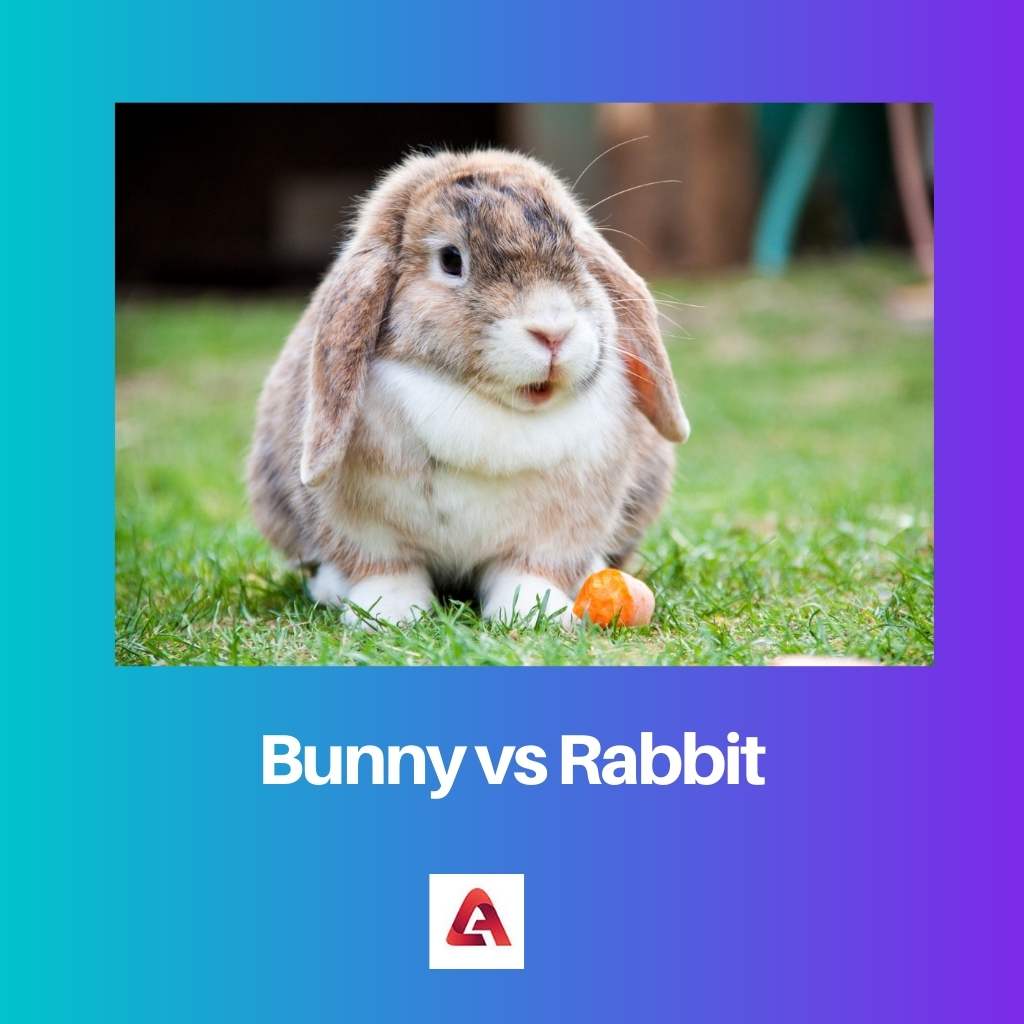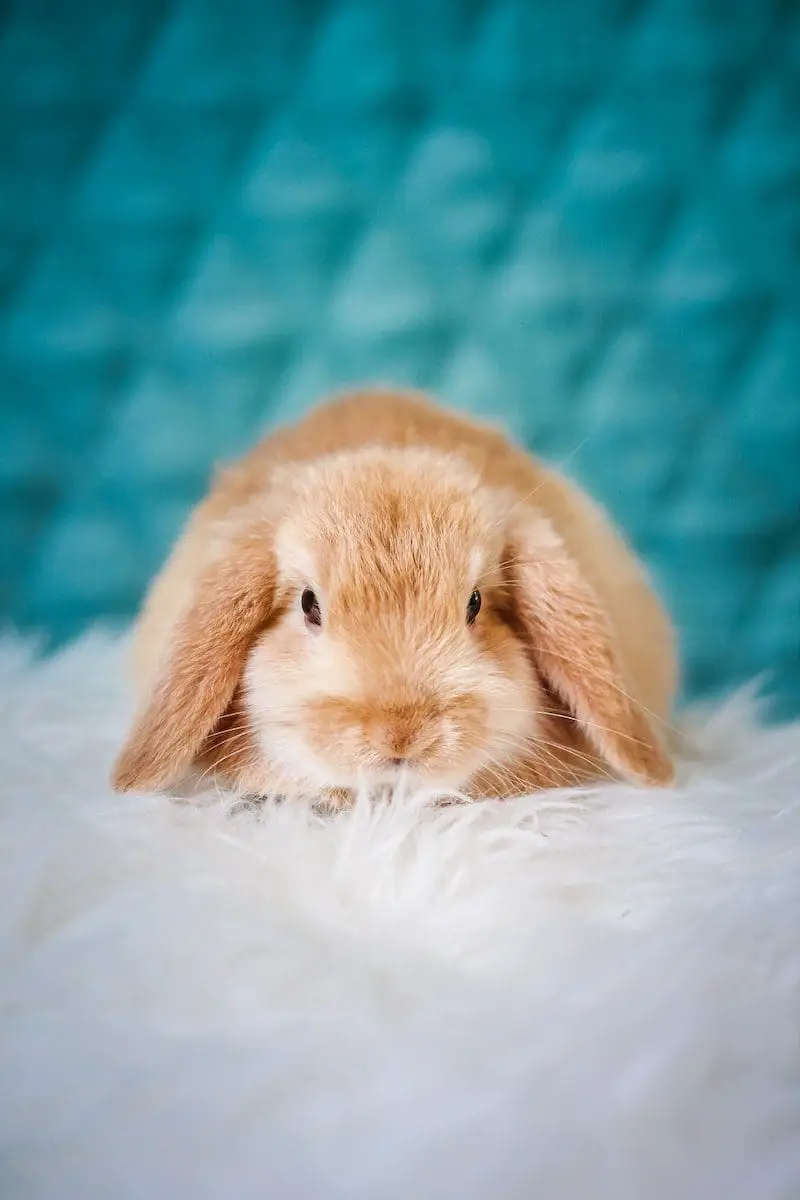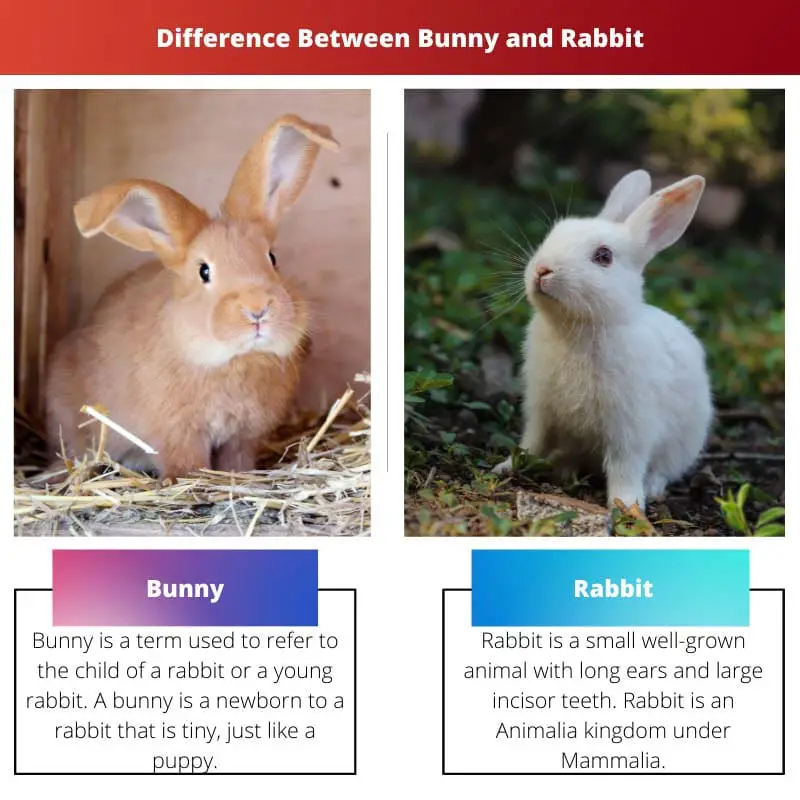Speaking of which, rabbits and bunnies are the same but differentiated based on age. On the other hand, rabbit is popularly known as a mammal, while bunny is used as a term of endearment for calling out a young child.
Key Takeaways
- Bunny is a term used to refer to a young rabbit, while rabbit refers to both young and adult rabbits.
- Bunnies are kept as pets, while rabbits are sometimes used for their meat and fur.
- Bunnies have larger eyes and ears, shorter tails, and are smaller than rabbits.
Bunny vs Rabbit
A young rabbit may be called a bunny; hence bunnies are the younger ones of Rabbits. A rabbit is a type of small mammal, while a bunny is a small rabbit. Until the rabbit is 1 year old, it’s called a bunny. For instance, “We fed the rabbits some beetroot tops.” And “he has a little bunny rabbit”.

Bunnies are rabbits but have a childlike appearance. They are referred to as the child of a rabbit or a young rabbit in various circumstances, especially in cartoons.
On the contrary, a rabbit is a well-grown adult mammal with long ears, short fluffy tails, strong large hind legs, and large incisor teeth.
Comparison Table
| Parameters of Comparison | Bunny | Rabbit |
|---|---|---|
| Meaning | Bunny is a term used to refer to the child of a rabbit or a young rabbit. A bunny is a newborn to a rabbit that is tiny, just like a puppy. | Rabbit is a small well-grown animal with long ears and large incisor teeth. Rabbit is an Animalia kingdom under Mammalia. |
| Etymology | Before the term rabbit arose, Early in the 17th century, people used to call ‘rabbit’ as a bunny. In the 1500s, the bunny came from the word ‘Bun’ as a regional word used for small rabbits in England. | Rabbit is derived from the Middle English word ‘Rabet’, which was rooted to robbe in French or Middle dutch. |
| Weight | Bunny looks so tiny, which weighs around 700grams to 880 grams. | Rabbits are small but are grown up with two large ears which weigh between 1.2 to 2 kilograms. |
| Life span | Bunnies are young, and the life span depends on the immune system, which should be strong to survive. If so, can live for 9 years. | Rabbits can live a maximum of up to 12 years and a minimum of 8 years. |
| Behavior | Bunny, just like the name itself, sounds naive, callow, young, attractive, and clumsy. And shows behavior like Nudging, running, Boinking, chinning, flopping, licking and digging, etc. | Rabbits are so pleasant and relaxed, which runs so fast, active, Digging, grunting, stomping, grinding teeth, clingy, biting, and chinning. |
What is Bunny?
Bunnies are rabbits but have a childlike appearance. They are referred to as the child of a rabbit or a young rabbit in various examples, especially in cartoons.
However, when it becomes old, bunnies will be called rabbits, and their life span depends on the immune system, which should be strong to survive.
By the 1500s, young rabbits were replaced with the name bunny, which originated from the word ‘Bun’, a regional word used for small rabbits in England.
On the whole, a bunny is a budding child to an adult rabbit and has the appearance of a tiny canine, with adorable tiny ears and maturing milky teeth.

What is Rabbit?
On the other hand, rabbits are the first term that strikes our minds when we see a well-grown adult mammal with long ears, short fluffy tails, strong large hind legs, and large incisor teeth.
The word Rabbit originated from the Middle English word ‘Rabet’, which was influenced by the word “robbe” in French or Middle Dutch.
Unlike bunnies, immature children, rabbits are so pleasant and relaxed. However, they are actively engaged in digging, grunting, stomping, grinding teeth, clingy, biting, and chinning here and there constantly.

Main Differences Between Bunny and Rabbit
- Bunny weight is estimated between 700 to 880 grams, albeit Rabbits are grown-up adult animals that weigh between 1.2 to 2 kilograms.
- Bunny shows the behaviour of a puppy, like naive, crying, flopping, licking, clumsy, chinning and digging, etc. On the other hand, rabbits somehow sound mature and show the behaviour of an adult animal- Grunting, biting, Chinning, Stomping, Humping, clinging, and running.




